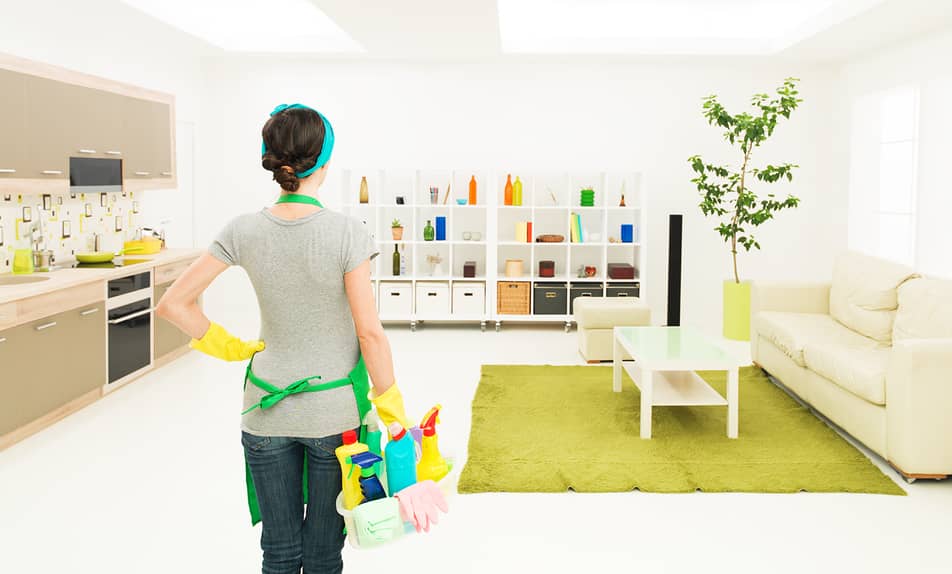How to get rid of volatile organic compounds (VOCs)

Volatile organic compounds, or VOCs, are gases that emit from certain substances. There are thousands of products in the world that emit these gases, but unfortunately, they can have adverse effects on a person's lung health.
Common sources of VOC exposure include the following:
-
Paints
-
Nail polishes
-
Carpeting
-
Adhesives
-
Aerosol sprays
-
Household cleaners
-
Air fresheners
-
Pesticides
-
Craft supplies
-
Solvents and wood preservatives
How VOCs Affect Indoor Air Quality
Due to the enclosed nature of indoor spaces, it's normal for the VOC concentration in the air to be up to 10 times higher than outdoors.
This is a major contributor to health problems such as sick building syndrome, an illness commonly experienced by office workers. This health problem is caused by poor ventilation in a building, which allows volatile organic compounds and carbon monoxide and carbon dioxide to build up in the air.
Any indoor space with inadequate ventilation can cause this sickness. Symptoms to look for include the following:
-
Eye irritation
-
Itchy or swollen throat
-
Irritated, uncomfortable nasal passages
-
Headaches
-
Skin rashes
-
Nausea
-
Fatigue
-
Unexplained dizziness
-
Shortness of breath
-
Memory impairment
-
Lung discomfort
It's important to remember that not all of these organic compounds are equally toxic. Some may cause symptoms immediately, but others may have no effect at all.
Removing VOCs From Indoor Air
Increase Ventilation
The problem of exposure to these chemicals can be lessened by ensuring that all indoor spaces have sufficient air flow and ventilation. Homes with central air and heating can install special air filters that are designed to reduce VOC levels indoors, and many buildings can benefit from periodically opening windows to allow fresh air circulation.
Before opening windows, however, it is important to check the outdoor air quality. Some areas of the world experience persistent heavy particle pollution, and these areas will not benefit from circulating outdoor air.
Install an Air Purifier
Portable air purifiers are a great way to lower the concentration of potentially dangerous organic chemicals in a home or office setting. Many contain multiple filters that can not only trap large particles such as dust and debris but also nanoparticles that most VOCs are made of.
Some styles of air purifiers can even be linked to compatible indoor air quality monitors, which is helpful for lowering the risk of health problems associated with breathing in these hazardous chemicals.
Add Potted Plants to the Building
Believe it or not, some researchers have noted that certain species of potted plants are effective for VOC removal. Greenery such as bromeliad, jade plant and dracaena have been shown in controlled studies to absorb certain chemicals released into the air, which prevents them from causing lung distress.
While the research into using these plants as natural air purifiers is still ongoing, houseplants like these can have a positive impact on a person's mental and physical health beyond air purification. This means that it can be beneficial to invest in some potted plants regardless.
Never Allow Cigarette Smoke Indoors
Cigarette smoke is full of toxic chemicals such as formaldehyde, benzene and over 70 other chemicals known to cause lung cancer. Even if the person smoking opens a window for ventilation, the secondhand smoke can still seep into walls, flooring, and furniture.
The best way to eliminate the risks associated with cigarette smoke is to never allow it indoors. If a home or building previously belonged to a smoker, it's important to wash every nonporous surface, change every air filter and replace all linens, carpeting, and furniture.
Choose a Good Dry Cleaner
Dry cleaners use a variety of chemicals to clean clothing. If the chemicals are not properly removed from the fabric before they are returned to the customer, that person will be breathing in VOCs whenever he or she puts on the garment.
When clothes are returned from a dry cleaner, they should not retain a chemical smell. If they do, the compounds used to clean the garments were not properly removed from the fabric. It's recommended to ask for proper drying from the establishment or to seek out a new dry cleaner.
Common Questions About VOCs
Do volatile organic compounds (VOCs) smell?
The short answer to this question is that VOCs do smell. However, there are many cases where the compound gives off a fresh or pleasant smell, so a person cannot rely on scent to know whether or not a substance is releasing harmful chemicals into the air. This is why indoor air quality monitors are important.
How can employees minimize VOC exposure in an office building?
If possible, installing a portable air purifier on or near a workspace is a good way to lower the concentration of dangerous chemicals in the air. It can also be helpful for a person to station his or her desk away from printers and copy machines because these are known to release higher levels of chemicals.
Do VOCs get trapped in walls and carpeting?
Dangerous chemicals can not only become trapped in carpeting, but they can also be used in the manufacture of certain types of carpet. When installing new carpeting, it's wise to look for those that are certified green or organic because they are much safer than those made of traditional materials.
Resources
-
[1] https:www.epa.govindoor-air-quality-iaqvolatile-organic-compounds-impact-indoor-air-quality
-
[2] http:axial.acs.org20160902volatile-organic-compounds-plants
-
[3] https:www.greenbuildermedia.comiaq7-common-air-pollutants-and-how-to-remove-them
-
[4] https:www.researchgate.netpublication275344400_Performance_of_Air_Cleaners_for_Removing_Multi-Volatile_Organic_Compounds_in_Indoor_Air
-
[5] https:www.epa.goviris
- [6] https:www.epa.govindoor-air-quality-iaqindoor-air-pollution-introduction-health-professionals-printable-version
